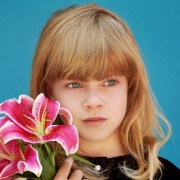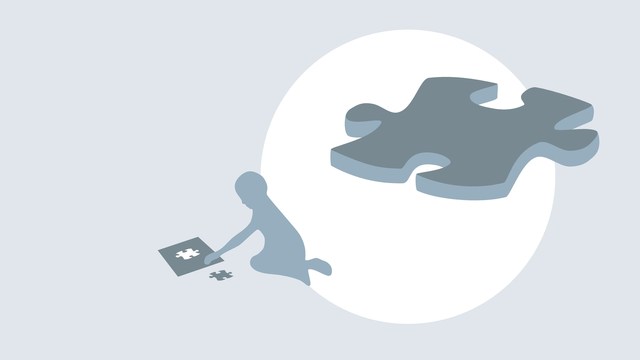 Photo: Getty Images
Photo: Getty Images
Autism is an umbrella term to describe people with a neurological disorder that affects their psychological and sometimes physical development. There are varying degrees of autism, ranging from total mental retardation to a mild developmental delay in an otherwise normally functioning child.
Different types are:
Early Infantile Autism, or Classic Autism
This classic type of autism first noted by Leo Kanner in 1943 was often present at birth, with parents reporting that their babies seemed different, did not maintain eye contact, didn’t learn how to smile and didn’t cry when they left the room, which is a normal response to being separated from the mother. Sometimes this type of autism can develop as late as three years old but there are often signs earlier than that. This type of autism was noted to affect one in 10,000 babies or small children.
Regressive Autism, or Acquired Autism
This is when a child is born developmentally normal and meets his milestones and then has a sudden or gradual loss of skills, usually starting at 15 to 30 months in age. The Neuropsychology Review wrote:
"A significant proportion of children diagnosed with Autistic Spectrum Disorder experience a developmental regression characterized by a loss of previously-acquired skills. This may involve a loss of speech or social responsitivity, but often entails both ... the setback is both puzzling and disturbing since it may transform a typically developing toddler into a non-verbal child with a severe form of AD."
Asperger’s Syndrome, or High-Functioning Autism
This is a mild form of autism, described by Dr. Hans Asperger in 1943. With asperger’s syndrome, the person is of normal intelligence and has no difficulties with speech, although they may struggle to find the right words to describe what they want to discuss and may find conversations awkward.
They may not know the right moment to begin or end a conversation and may not understand jokes or sarcasm. They can have difficulty understanding tones of voice and facial expression, as well as social cues. For instance, if a child playing "Boo" with a baby makes the baby cry, most children would know he doesn’t like it and would stop, but some children with Asperger’s syndrome just carry on.
Children with Asperger’s syndrome can find it difficult to make friends and play with other children and so can become withdrawn or anxious. They find group situations difficult and may find it harder than is normal to share or follow other’s rules. They may find it hard to play imaginative games.
They are not usually developmentally delayed like children with classic or regressive autism but they can have learning difficulties such as dyslexia and find school work hard to keep up with.
Childhood Disintegrative Disorder
This is a type of regressive autism where the child develops normally, physically and socially until between the ages of 2 to 4 years and they then have a dramatic loss of social ability, speech, and motor skills and often lose bladder and bowel control and develop seizure disorders. Around two per 100,000 children with ASD have CDD.
Pervasive Developmental Disorder - Not Otherwise Specified (PDD-NOS)
This is a disorder that has many traits similar to autism such as speech difficulties, difficulties playing with other children, repetitive play or body movements, becoming emotionally distressed at changes to routine and difficulty in relating to facial expressions or understanding language.
The main difference between PDD-NOS and autism is that the child is still social and wants to be around other people, so cannot be classed as having classic autism.
Sources:
Autism Spectrum Disorders (Pervasive Developmental Disorders), National Institute of Mental Health. Web. 4 September 2011. http://www.nimh.nih.gov/health/publications/autism/complete-index.shtml
What is Asperger Syndrome?, The National Autistic Society. Web. 4 September 2011.
http://www.autism.org.uk/about-autism/autism-and-asperger-syndrome-an-introduction/what-is-asperger-syndrome.aspx
Handbook of Autism and Pervasive Developmental Disorders, Google Books. Web. 4 September 2011.
http://books.google.co.uk/books?id=r6z7CT5v8L4C&printsec=frontcover#v=onepage&q&f=false
Regression in Autistic Spectrum Disorders, Neuropsychology Review. Web. 4 September 2011.
http://www.springerlink.com/content/85g15p3774785p61/
Autism: recognising the signs in young children, Department of Primary and Community Nursing, University of Central Lancashire, UK. Web. 4 September 2011.
http://www.mugsy.org/pmh.htm
Joanna is a freelance health writer for The Mother magazine and Suite 101 with a column on infertility, http://infertility.suite101.com/. She is author of the book, 'Breast Milk: A Natural Immunisation,' and co-author of an educational resource on disabled parenting.
She is a mother of five who practised drug-free home birth, delayed cord clamping, full term breast feeding, co-sleeping, home schooling and flexi schooling and is an advocate of raising children on organic food.
Reviewed September 5, 2011
by Michele Blacksberg R.N.
Edited by Jody Smith






Add a CommentComments
There are no comments yet. Be the first one and get the conversation started!